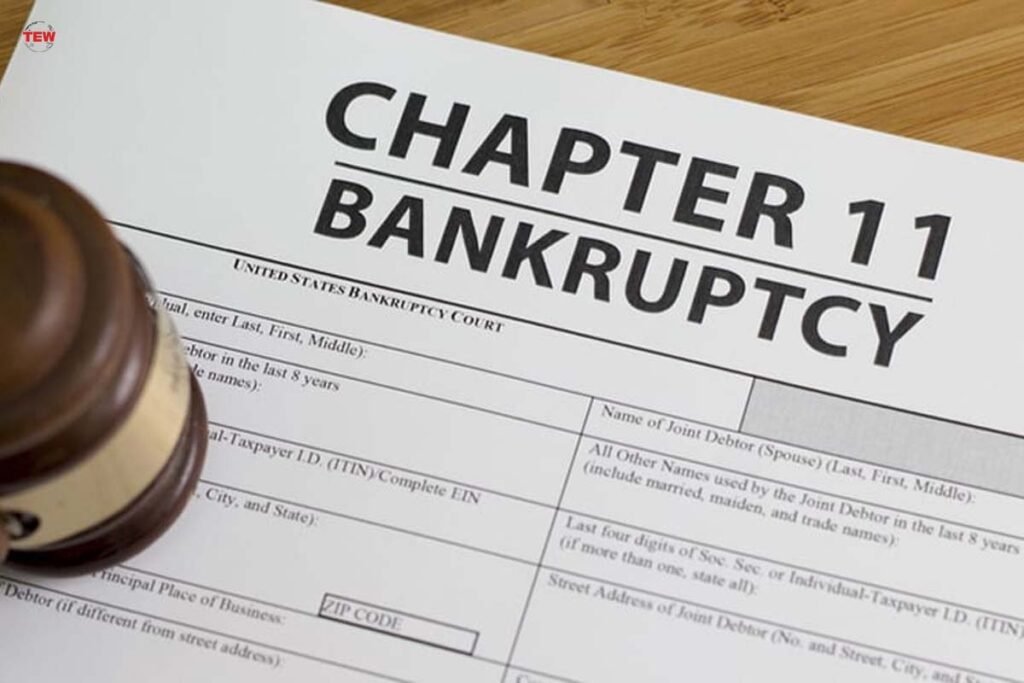If you’re considering filing for bankruptcy, it’s important to understand the key differences between Chapter 7 and Chapter 11 bankruptcy under the US Bankruptcy Code.
Your choice of Chapter 7 and Chapter 11 Bankruptcy, chapter depends on various factors, such as your goals for seeking bankruptcy relief.In this article, we’ll explore the differences between Chapter 7 and Chapter 11 bankruptcy and the requirements for filing under each chapter.
Chapter 7 and Chapter 11 Bankruptcy: Understanding the Key Differences
When it comes to bankruptcy, it’s essential to understand the differences between Chapter 7 and Chapter 11 bankruptcy filings. The most notable difference is that Chapter 7 is a liquidation bankruptcy, while Chapter 11 is a reorganization bankruptcy. In this article, we’ll explore the distinctions between the two bankruptcy options and what they entail.
1. Chapter 7 Bankruptcy: An Overview

Individuals can file for bankruptcy under either Chapter 7 and Chapter 11 Bankruptcy Code. To qualify for Chapter 7, the individual must meet the income requirements specified under the code, which you can estimate in a Chapter 7 means test calculator. Individuals with not enough disposable income to repay their debts can consult with Chapter 7 lawyers to file for bankruptcy under Chapter 7. Disposable income is the amount of money remaining after paying reasonable living expenses.
Do You Lose Belongings in Chapter 7 Bankruptcy?
In a Chapter 7 bankruptcy filing, the trustee may seize and sell any non-exempt property to pay off creditors. Non-exempt property refers to assets with equity that exceeds the allowed Chapter 7 and Chapter 11 Bankruptcy exemptions. The amount of each bankruptcy exemption depends on whether the debtor may use federal or state bankruptcy exemptions. A debtor’s residency for the two years preceding the filing of the Chapter 7 petition determines the bankruptcy exemptions the debtor may claim.
Most Chapter 7 cases filed by individuals are no-asset cases. In such cases, the trustee abandons any of the debtor’s property that cannot be sold to repay creditors. The Chapter 7 case is typically complete in about four to six months after filing, and the debtor receives a bankruptcy discharge for most unsecured debts. However, some debts, such as student loans, most tax debts, debts owed to the government, alimony, and student loans, are not forgivable in Chapter 7 and Chapter 11 Bankruptcy.
It’s also essential to note that an individual filing Chapter 7 could lose property that secures a loan, such as a mortgage or a car title loan. If the debtor cannot afford to pay the mortgage payments or car loan payments, the creditor may recover the collateral in satisfaction of the debt.
2. Chapter 11 Bankruptcy: An Overview
Let’s say you want to continue operations, but let’s say you lost a lawsuit and can’t pay.
Chapter 11 bankruptcy filings are primarily for businesses that want to reorganize their operations and continue operating while repaying their debts over time. One significant difference between Chapter 11 and Chapter 7 is the attorney fee cost. Chapter 7 bankruptcies cost between $1500-$2500 in attorney fees, while Chapter 11 bankruptcies can cost upwards of $25,000-$40,000.
3. Chapter 11 Bankruptcy for Individuals
While Chapter 13 bankruptcy is the most common option for individuals seeking debt restructuring, some may have debts that exceed the Chapter 13 bankruptcy debt limits. For those individuals, filing for Chapter 11 bankruptcy may be the only way to restructure their debts. However, the Chapter 11 process is not typically cost-effective or efficient for most individuals. Individuals who have substantial income and assets typically file Chapter 11 cases.
4. Chapter 7 Bankruptcy for Businesses
When a business files for Chapter 7 bankruptcy, it means the business is closing down. Secured creditors, those who hold a lien on collateral, receive their collateral. The Chapter 7 trustee sells the remaining assets and uses the funds to pay off the company’s unsecured creditors. The Chapter 7 trustee assumes control of all business assets on the date the business files for Chapter 7 and Chapter 11 Bankruptcy.
5. Chapter 11 Bankruptcy for Businesses

Businesses that want to remain open but need assistance in restructuring their debts can file for Chapter 11 bankruptcy. The party filing for Chapter 11 remains in control of the business assets, and the business continues to operate during the Chapter 7 and Chapter 11 Bankruptcy case. However, there are specific guidelines that all Chapter 11 debtors must follow.
6. Subchapter 5 of Chapter 11 Bankruptcy
Subchapter 5 provides a more streamlined approach to Chapter 11 bankruptcy, making it easier for businesses with less debt to receive some benefits from Chapter 11. It can be a smoother process that leads to a Chapter 11 plan confirmation. If you’re interested in exploring Subchapter 5, you can check out an example subchapter to get a better understanding of the process.
Understanding the Chapter 11 Bankruptcy Process
Chapter 11 bankruptcy is a complex reorganization process that requires the debtor to file a detailed Disclosure Statement. This statement provides creditors and parties with an interest in the business with details about the business’s history, assets, income, liabilities, and other business affairs. In this article, we’ll explore the Chapter 11 bankruptcy process in-depth.
1. The Disclosure Statement
The debtor must file a detailed Disclosure Statement that provides enough information for parties to vote for or against the Chapter 11 plan. Some bankruptcy alternative courts have local forms that Chapter 11 debtors can use to prepare the Disclosure Plan.
2. The Chapter 11 Plan of Reorganization
The debtor must also file a detailed Chapter 11 Plan of Reorganization, which is much more detailed than the Disclosure Statement. The plan contains descriptions of the classes of claims and how creditors within each class will be paid. Creditors vote for or against the Chapter 11 plan, and the plan cannot be confirmed without creditor participation.
3. Creditor Committees
In some cases, the court may appoint Creditors’ Committees that are responsible for investigating the debtor’s conduct, participating in the administration of the case, and drafting a Chapter 11 plan. Creditors may also file competing plans for consideration.
4. Confirmation of the Chapter 11 Plan
Chapter 11 cases typically involve the filing of numerous motions, including motions to use cash collateral, value assets, assume or reject leases, and continue or cancel contracts. Creditors may file motions to dismiss, convert the case to Chapter 7, or modify the automatic stay to obtain collateral.
A debtor may remain in Chapter 11 for years, and business Chapter 11 cases can be very complex. It could take more than a year to confirm a Chapter 11 plan, during which the debtor must pay quarterly fees and file monthly reports.
Upon confirmation of the Chapter 11 plan, the debtor is discharged from any debt incurred before the date of confirmation. The Chapter 11 plan creates a new contract with the debtor’s creditors. If the debtor fails to make the payments required by the Chapter 11 plan, creditors can take certain actions to collect the debts or protect their rights in collateral securing loans.
5. Streamlined Chapter 11 Cases
Small businesses and businesses that own a single asset may file a streamlined Chapter 11 case that is less complex than a regular Chapter 11 case.
Comparing Fees and Costs

When considering filing for Chapter 7 and Chapter 11 Bankruptcy, it’s essential to understand the bankruptcy fees and costs associated with each type of bankruptcy. In this article, we’ll explore the filing fees and attorney costs for Chapter 7 and Chapter 11 bankruptcy.
1. Filing Fees
The filing fee for a Chapter 7 bankruptcy case is $335, while the filing fee for a Chapter 11 case is significantly higher at $1,717. Additionally, debtors in Chapter 11 must pay quarterly fees to the United States Trustee. The Chapter 11 quarterly fee is calculated based on the disbursements during the three-month calendar quarter, with a minimum of $325 due each quarter.
2. Attorney Fees
Attorney fees can vary widely depending on the complexity of the case, the attorney, and the region in which the case was filed. On average, Chapter 7 attorney fees range from $1,000 to $1,750. In contrast, Chapter 11 attorney fees can range from $10,000 to $25,000 for a small Chapter 11 case to $50,000 for a medium-sized Chapter 11 case. Large, complex Chapter 11 cases involving multi-million dollar corporations or individuals could cost as much as $100,000 to $500,000.
3. Other Considerations
While some individuals and companies can file for Chapter 7 without an attorney, Chapter 11 cases typically require the assistance of an experienced Chapter 11 lawyer. Chapter 11 reorganization is a complex process that can confuse attorneys who do not have experience handling these types of Chapter 7 and Chapter 11 Bankruptcy cases, let alone individuals who have no legal experience or knowledge of the bankruptcy system.
It’s crucial to consider all factors when deciding which type of Chapter 7 and Chapter 11 Bankruptcy to file. While Chapter 7 may be a more straightforward process for some, individuals and businesses with more complicated financial situations may need to consider Chapter 11 bankruptcy, despite the higher fees and costs. Seeking the advice of a qualified Chapter 7 and Chapter 11 Bankruptcy attorney can help ensure you understand the process and make informed decisions.
In conclusion, while the fees and costs associated with Chapter 11 may be higher, the benefits of reorganization and debt restructuring may make it a more viable option for those with complex financial situations.





